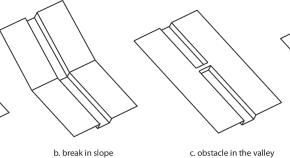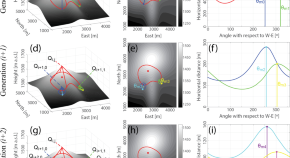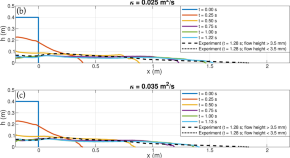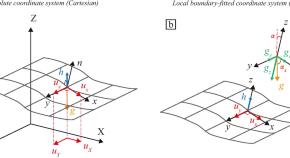
Collection
Pyroclastic current models: benchmarking and validation
- Submission status
- Open
- Open for submission from
- 22 July 2021
- Submission deadline
- 31 December 2025
Pyroclastic currents are complex gas-particle flows that produce extreme hazards around explosive volcanoes, and leave a range of deposit types. Our understanding of these currents has advanced through the decades through a combination of field studies, experiments, and theoretical modeling. Many fundamental questions remain about the dynamics of pyroclastic currents and our ability to predict their behavior and interpret deposits. Computational fluid dynamics models are critical tools for addressing these questions, but the similarities and differences between models must be understood and quantified, and they must be shown to adequately represent the intended physics; in other words, the models need to be subject to validation and benchmarking. This topical collection presents emerging modeling studies on pyroclastic currents and critical evaluation of the strengths and weaknesses of these models.
Editors
-
Greg A. Valentine
Valentine is Distinguished Professor at the Dept of Geology, University at Buffalo, with research interests in physical processes associated with volcanism, from the scale of eruptive styles at individual volcanoes to the dynamics of pyroclastic currents including large-volume, widespread ignimbrites and associated calderas.
Articles (8 in this collection)
-

-
Comment on Synthetic benchmarking of concentrated pyroclastic current models
Authors
- Palak Patel
- Abani Patra
- Sylvain Charbonnier
- Content type: Comment
- Open Access
- Published: 14 May 2022
- Article: 55

-
Calibration strategies of PDC kinetic energy models and their application to the construction of hazard maps
Authors (first, second and last of 6)
- A. Aravena
- A. Bevilacqua
- R. Cioni
- Content type: Research Article
- Published: 16 February 2022
- Article: 29

-
The influence of gas pore pressure in dense granular flows: numerical simulations versus experiments and implications for pyroclastic density currents
Authors (first, second and last of 4)
- Alvaro Aravena
- Laurent Chupin
- Olivier Roche
- Content type: Research Article
- Published: 29 October 2021
- Article: 77

-
Synthetic benchmarking of concentrated pyroclastic current models
Authors (first, second and last of 9)
- V. Gueugneau
- S. Charbonnier
- K. Kelfoun
- Content type: Research Article
- Published: 27 October 2021
- Article: 75

-
Validation of a two-layer depth-averaged model by comparison with an experimental dilute stratified pyroclastic density current
Authors (first, second and last of 6)
- Hiroyuki A. Shimizu
- Takehiro Koyaguchi
- Matteo Cerminara
- Content type: Research Article
- Open Access
- Published: 20 October 2021
- Article: 73

-
A framework for validation and benchmarking of pyroclastic current models
Authors (first, second and last of 5)
- T. Esposti Ongaro
- M. Cerminara
- G. A. Valentine
- Content type: Perspectives
- Published: 03 June 2020
- Article: 51

-
Preface to the topical collection—pyroclastic current models: benchmarking and validation
Authors
- Greg A. Valentine
- Content type: Editorial
- Published: 09 November 2019
- Article: 69


